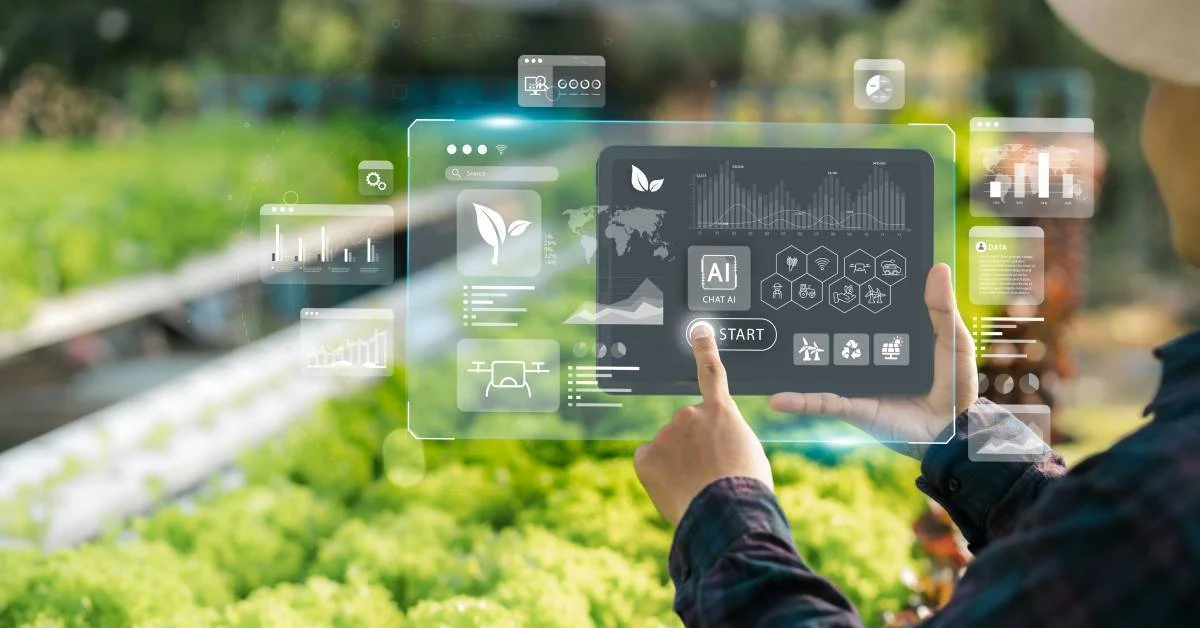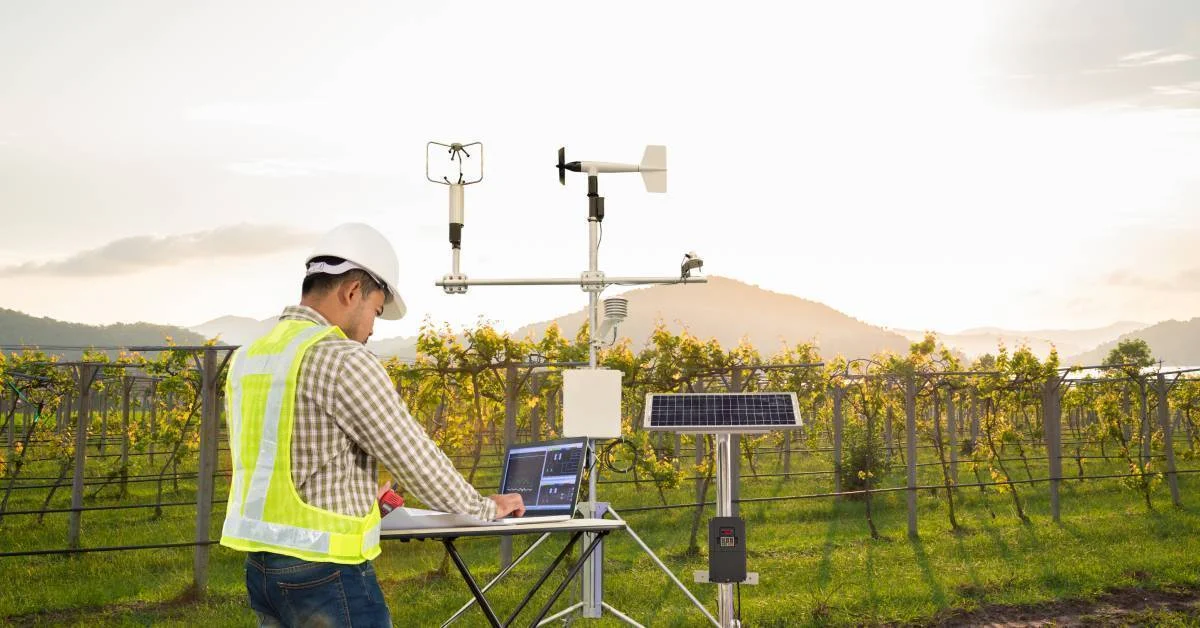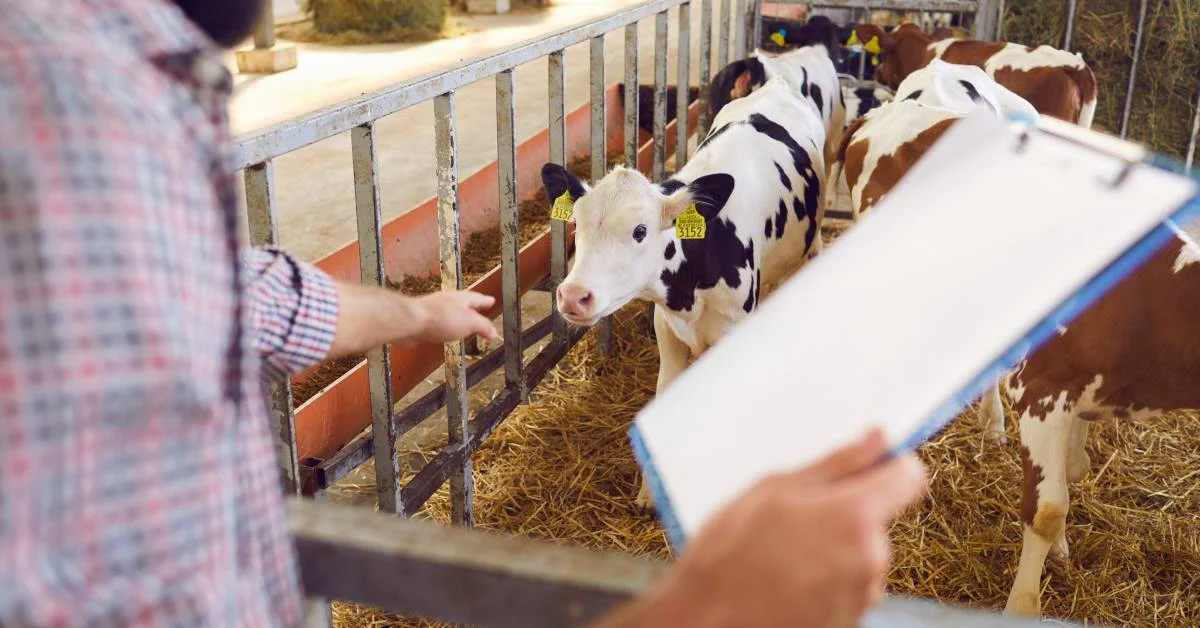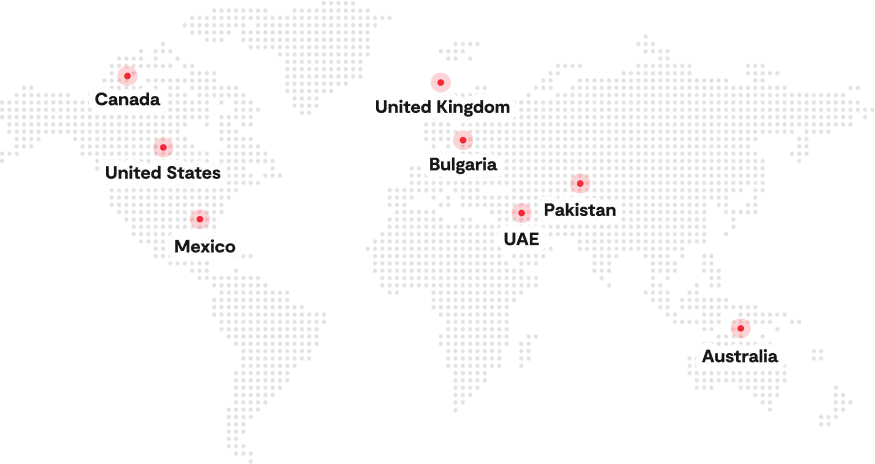In modern agriculture, technology is rapidly transforming how farmers approach farming practices. With growing concerns about climate change, resource efficiency, and sustainable food production, precision agriculture has become crucial for the future of farming.
One key component driving this transformation is crop health monitoring, which helps maintain optimal growing conditions and mitigate potential losses. Integrating IoT (Internet of Things) technology into agriculture revolutionizes crop monitoring, allowing farmers to track and enhance crop health with unprecedented accuracy and real-time data.
What is IoT in Precision Agriculture?
The Internet of Things (IoT) refers to the interconnection of physical devices through the Internet, enabling them to collect, exchange, and act on data. In agriculture, IoT involves using intelligent sensors, devices, and data analytics to optimize farming operations.
By integrating these elements, IoT enhances precision agriculture practices, making it possible to monitor crops, soil conditions, and environmental factors more efficiently. In crop health monitoring, IoT applications include sensors for tracking soil moisture, temperature, humidity, and nutrient levels.
For instance, a soil moisture sensor can detect if a field requires irrigation, while environmental sensors can monitor conditions that may lead to disease outbreaks. Other critical IoT applications in agriculture include intelligent irrigation systems, machine navigation for automated farming, and harvesting robots.
Why is Crop Health Monitoring Critical?
Monitoring crop health is essential for maximizing yields and minimizing losses. Traditionally, farmers relied on manual inspections to assess plant health, which is time-consuming and prone to delays in identifying issues. Additionally, various environmental factors such as weather patterns, soil quality, and pest infestations play a significant role in crop health, making timely interventions crucial.
The shift towards real-time, data-driven decision-making has highlighted the need for more accurate and efficient ways to monitor crop health. With IoT, farmers can detect issues like nutrient deficiencies or pest invasions early, allowing prompt action to prevent these problems from spreading.
How IoT Solutions Enhance Crop Health Monitoring with Crop Management Software?
Integrating IoT (Internet of Things) technology into agriculture has revolutionized traditional methods of crop health monitoring, offering a more data-driven approach to managing crops.
IoT solutions empower farmers with real-time data collection and analysis, providing a comprehensive understanding of crop conditions and enabling timely decision-making to ensure optimal health.
The addition of crop health monitoring software enhances the effectiveness of these IoT-based strategies by streamlining data management and offering predictive insights. Here’s how IoT solutions, coupled with advanced crop management software, significantly enhance crop health monitoring:
1. Use of Sensors and Data Analytics
IoT technology employs a variety of sensors for different aspects of crop health monitoring, while crop health monitoring software helps process and analyze the collected data. For example, if soil moisture drops below a certain level, an alert can trigger automated irrigation systems, preventing water stress on crops. Here’s how IoT solutions, coupled with advanced crop management software, significantly enhance crop health monitoring:
- Soil Sensors: These sensors measure soil moisture levels, nutrient content, and pH to ensure optimal growing conditions. The data gathered is fed into the crop management software, where it is analyzed to detect any deviations from desired parameters.
- Environmental Sensors: These sensors track temperature, humidity, and light exposure, which can affect plant growth. By integrating this data with crop health monitoring software, farmers can monitor trends over time and optimize conditions to boost yields.
- Disease Detection Sensors: IoT-enabled disease detection sensors can identify signs of plant diseases based on environmental conditions and plant symptoms. When connected to a comprehensive crop health monitoring software, alerts can be generated to notify farmers of potential outbreaks, allowing for immediate corrective actions.
2. Remote Sensing and Imaging
IoT-powered remote sensing technology enables farmers to monitor crops without direct physical intervention. Tools like agriculture drones equipped with cameras and sensors provide aerial imagery of fields, which, when integrated with crop health monitoring software, allows for a detailed analysis of crop conditions.
- Drone and Satellite Imaging: Drones can offer a comprehensive view of the field’s health, identifying areas that need attention. By uploading the data to crop management software, farmers can overlay imaging data with other metrics like soil moisture or weather conditions for a complete picture. Similarly, satellite imaging provides broader coverage and can help detect early signs of crop stress or disease.
- Computer Vision Tools: IoT solutions can employ computer imaging techniques to detect patterns related to plant stress or growth abnormalities. When this data is fed into crop health monitoring software, farmers gain access to detailed insights and reports that enable them to take precise actions to address specific issues.
3. Predictive Analytics
The combination of IoT-generated data with AI-driven crop health monitoring software facilitates predictive analytics in agriculture. This capability allows for the early detection of potential problems like pest infestations, nutrient shortages, or disease outbreaks before they escalate.
- AI and Machine Learning Models: Using historical data and current conditions, AI models integrated into the crop management software can provide forecasts and recommendations. For instance, if weather patterns suggest an increased risk of pest infestation, the software can suggest preventive measures.
- Predictive Maintenance Alerts: Analyzing trends in sensor data, the software can predict when equipment like irrigation systems might require maintenance, ensuring minimal disruption to farming operations.
Advantages of IoT-enabled Crop Health Monitoring
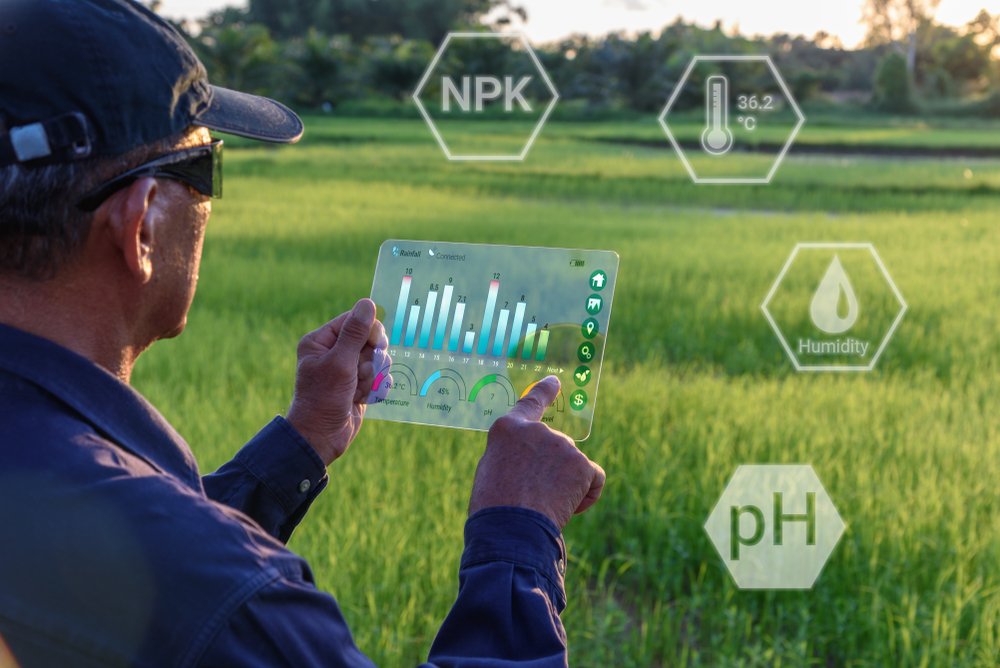
IoT (Internet of Things) technology is revolutionizing agriculture by enabling more precise, data-driven approaches to crop health monitoring. This shift towards IoT-enabled solutions offers numerous benefits that help farmers optimize their operations, minimize risks, and increase profitability.
Here are the key advantages of IoT-enabled crop health monitoring:
1. Real-time Decision Making
IoT solutions offer immediate access to farm data, empowering farmers to respond swiftly to threats like disease, pests, or adverse weather. This real-time monitoring allows for precise adjustments in water and nutrient application, ensuring that crops receive what they need precisely when needed.
2. Reduced Costs and Improved Efficiency
Automating crop health monitoring through IoT reduces labor costs and the need for manual inspections. The ability to detect problems early ensures that interventions are timely and accurate, resulting in higher yields and lower input costs.
3. Sustainability and Resource Management
Smart farming enabled by IoT minimizes resource wastage by applying inputs like water and fertilizers only when needed. By optimizing resource usage, farmers can significantly reduce their environmental footprint while improving the sustainability of their operations.
4. Increased Productivity
IoT helps in boosting crop productivity by ensuring optimal growing conditions are maintained. With continuous monitoring and data-based insights, farmers can make informed decisions that lead to higher yields and long-term profitability.
Challenges and Limitations of IoT in Crop Monitoring
While IoT-enabled crop monitoring offers significant benefits for agriculture, it also presents several challenges and limitations that must be addressed for broader adoption and optimal use. Understanding these obstacles is crucial for farmers and technology providers to improve the effectiveness and accessibility of IoT solutions.
Here are the main challenges and limitations of using IoT in crop monitoring:
1. Initial Costs and Accessibility
Setting up IoT solutions can be prohibitive for small-scale farmers, and financing such investments may only sometimes be viable. Moreover, reliable internet connectivity is crucial for IoT functionality, and many rural areas lack the necessary infrastructure.
2. Complexity of IoT Systems
IoT-driven agriculture requires skilled personnel to manage and interpret data. Farmers may need help integrating different devices and platforms, which may lead to potential compatibility issues.
3. Data Privacy and Security
With IoT, there are concerns about data ownership and security. Ensuring that data is protected from unauthorized access is vital for the success of IoT in agriculture.
The Future of IoT in Crop Health Monitoring
The future of IoT in crop health monitoring looks promising, with ongoing advancements in technology driving the evolution of precision agriculture. As the demand for sustainable farming practices increases, IoT innovations are poised to play a crucial role in ensuring food security, improving agricultural productivity, and minimizing environmental impact.
Several key agriculture trends and emerging technologies are shaping the future of IoT-enabled crop health monitoring, offering new opportunities and overcoming existing limitations:
1. Advancements in Sensor Technology
The future of IoT in agriculture will be driven by the development of more advanced, accurate, and affordable sensors that can monitor a broader range of parameters.
- Miniaturized and Low-Cost Sensors: The trend towards miniaturization will lead to the creation of small, lightweight sensors that can be deployed more easily on crops, soil, or farming equipment. As the cost of manufacturing sensors decreases, they will become more accessible to farmers, including small-scale and resource-poor operators.
- Multi-Parameter Monitoring: Next-generation sensors will be able to monitor multiple parameters simultaneously, such as soil pH, nutrient levels, moisture, and crop stress. This will provide a more comprehensive picture of crop health, enabling precise interventions.
- Self-Powered Sensors: Innovations in energy harvesting, such as solar-powered or kinetic energy-based sensors, will reduce the dependence on external power sources. This will extend the lifespan of IoT devices and reduce the need for frequent battery replacements.
2. Integration with AI, Machine Learning, and Big Data
The combination of IoT with AI, machine learning, and big data analytics is set to revolutionize crop health monitoring by providing deeper insights and predictive capabilities.
- Predictive Analytics for Crop Diseases: Using AI algorithms, IoT data can be analyzed to identify early warning signs of diseases, pest infestations, or nutrient deficiencies. For instance, machine learning models can detect temperature, humidity, and soil moisture data patterns that indicate the risk of fungal diseases, allowing farmers to take preventative actions.
- Automated Decision Support Systems: The integration of AI will enable automated decision-making based on real-time data. For example, if IoT sensors detect low soil moisture levels, an AI-driven system could automatically activate irrigation systems to optimize water usage. This level of automation can significantly reduce labor costs and improve farming efficiency.
- Big Data-Driven Insights: With the continuous accumulation of data from multiple farms, big data analytics will allow for regional analysis of crop health trends. This could help predict larger agricultural trends, support supply chain management, and contribute to policy-making.
3. Emergence of 5G Technology for Enhanced Connectivity
The rollout of 5G technology will address some of the connectivity challenges currently limiting the adoption of IoT in agriculture.
- Faster Data Transmission: With 5G, IoT devices will be able to transmit data much more quickly, reducing latency and improving the accuracy of real-time monitoring. This will be especially beneficial for large farms with extensive networks of sensors and devices.
- Improved Connectivity in Remote Areas: 5 G networks’ wider coverage and higher bandwidth will enhance internet connectivity in rural and remote farming areas, making IoT solutions more accessible to a broader range of farmers.
- Support for High-Density IoT Deployments: 5G networks can support a higher density of connected devices, meaning large-scale farms can deploy more IoT sensors and smart devices without experiencing network congestion.
4. Blockchain for Data Security and Traceability
Blockchain technology will complement IoT by enhancing agricultural processes’ data security, traceability, and transparency.
- Data Integrity and Security: Farmers can ensure the integrity and security of their information by using blockchain to record IoT-generated data. Blockchain’s decentralized and tamper-proof nature prevents data manipulation, reducing the risk of cyber-attacks.
- Traceability in the Supply Chain: IoT sensors can collect data on crop conditions from the field and send it to the consumer, and blockchain can record this information to improve traceability. This is especially valuable for ensuring the authenticity of organic and sustainably grown products, as consumers increasingly demand transparency in food sourcing.
- Smart Contracts for Automated Transactions: Blockchain-powered smart contracts can automate transactions based on IoT data. For example, if a shipment’s temperature falls outside acceptable ranges during transportation, a smart contract could trigger an insurance claim automatically.
5. Remote Sensing and Advanced Imaging Techniques
Remote sensing technologies, such as drones, satellites, and multispectral imaging, are expected to become more sophisticated, offering new ways to monitor crop health.
- Drones with Enhanced Imaging Capabilities: Future farming drones equipped with high-resolution cameras, thermal imaging, and multispectral sensors will provide detailed crop health data that can be used to detect early signs of stress, pest infestations, or diseases. Drone swarms could be used for large-scale monitoring, covering hundreds of acres within hours.
- Satellite Imaging with Greater Precision: As satellite imaging technology advances, higher-resolution images will allow for more detailed field health monitoring, enabling the detection of subtle changes in crop health across large areas.
- Augmented Reality (AR) for Field Monitoring: AR technology, combined with data from IoT devices, could provide farmers with an interactive view of their fields, highlighting areas that require attention and displaying real-time data about crop conditions.
6. IoT-Powered Sustainable Farming Practices
The future of IoT in agriculture will focus heavily on sustainability to minimize environmental impact while maximizing productivity. As of 2024, over 75 million IoT devices are estimated to be used in agriculture worldwide. This number is projected to exceed 100 million by 2027 as more farmers embrace connected technologies for crop health monitoring and precision farming.
- Precision Water Management: IoT solutions will enable more efficient use of water resources by monitoring soil moisture and weather conditions. This will help reduce water waste and improve drought resilience.
- Targeted Application of Fertilizers and Pesticides: By using data from IoT sensors, farmers can apply fertilizers and pesticides only where needed, minimizing chemical use and reducing runoff into nearby ecosystems.
- Carbon Footprint Tracking: IoT sensors could measure factors such as soil carbon content and crop growth rates, providing data to help farmers adopt carbon-neutral or carbon-negative farming practices.
Conclusion
IoT revolutionizes farmers’ crop health monitoring by providing real-time insights and enabling crop management practices. IoT significantly impacts the agricultural industry by reducing resource wastage and increasing productivity. When combined with greenhouse management software, these technologies offer even greater control over environmental conditions, irrigation, and crop performance in controlled growing environments.
Farmers looking to embrace the future of farming should partner with Folio3 AgTech IoT-enabled solutions, which offer the tools and technologies needed for a sustainable, efficient, and profitable agricultural operation.
FAQs
What Types of Sensors are Used in IoT For Crop Health Monitoring?
Common sensors include soil moisture, environmental, temperature, and humidity sensors, and disease detection.
How Does IoT Improve Crop Productivity?
IoT helps optimize growing conditions, ensures timely interventions, and reduces manual labor, leading to increased crop yields.
What Are the Main Challenges of Implementing IoT in Agriculture?
Challenges include high initial costs, internet connectivity needs, data management complexities, and security concerns.


